Day-114 | Daily MCQs | UPSC Prelims | CURRENT DEVELOPMENT
[WpProQuiz 124]
[WpProQuiz 124]
[WpProQuiz 123]
THE CONTEXT: Maharashtra is the second state in India after Andhra Pradesh to approve the death penalty for heinous offences of rapes and gang-rapes, with the Maharashtra Assembly unanimously passing the Shakti Criminal Laws (Maharashtra Amendment) Bill.
THE EXPLANATION:
Add to your Knowledge:

THE CONTEXT: South Korea has become the 10th country outside of Europe to join the European Union (EU) law enforcement cooperation agency that fights terrorism and other international crimes.
WHAT IS EUROPOL?
Europol is the European Union’s law enforcement agency. Their main goal is to achieve a safer Europe for the benefit of all the EU citizens. It is established in 1992 and its headquarter is in The Hague, the Netherlands, we support the 27 EU Member States in their fight against terrorism, cybercrime and other serious and organized forms of crime.
Large-scale criminal and terrorist networks pose a significant threat to the internal security of the EU and to the safety and livelihood of its people. The biggest security threats come from:
The networks behind the crimes in each of these areas are quick to seize new opportunities, and they are resilient in the face of traditional law enforcement measures.
However, EUROPOL has no executive powers. The officials of EUROPOL cannot arrest the suspects without prior approval from competent authorities.
Under the agreement, police can now exchange information on crime and cooperate with member states of EUROPOL 17 European and nine non-European countries as well as international organizations and research institutes collaborating with the agency.
Who are the other 9 Non- EU members?
India and EUROPOL:
In the year 2020, India-EU Strategic Partnership: A Roadmap to 2025 was held, during the summit between India and the EU talked about implementing a working arrangement between Europol and the Central Bureau of Investigation (CBI).
THE CONTEXT: The eyeless, subterranean creature with 1,306 legs discovered 60 meters underground is the first ‘true millipede’.
THE EXPLANATION:
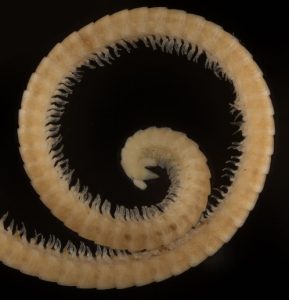
Finding unknown
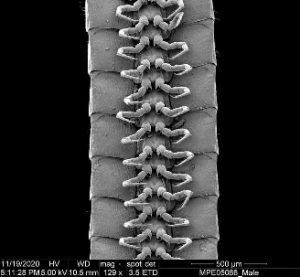
THE CONTEXT: Scientists have resumed tagging of Olive Ridley turtles at Rushikulya rookery along the Odisha coast, which would help them identify the migration path and places visited by the marine reptiles after congregation and nesting.
THE EXPLANATION:
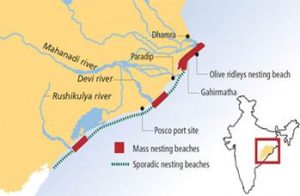
Mass Tagging:
Olive Ridley Sea Turtles
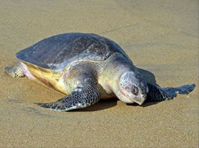
Developed by: The application has been developed by the Indian Turtle Conservation Action Network(ITCAN) in collaboration with the Turtle Survival Alliance-India and Wildlife Conservation Society-India.
THE CONTEXT: DRDO successfully conducted the flight test of Indigenously developed High-speed Expendable Aerial Target (HEAT) Abhyas from Integrated Test Range (ITR), Chandipur off the coast, Odisha.
THE EXPLANATION:
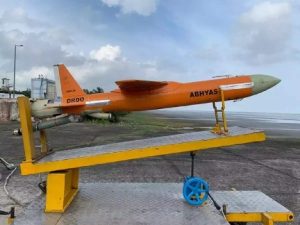
THE PRELIM PRACTICE QUESTION
1. Who among the following are eligible beneficiaries under Pradhan Mantri Ujjwala Yojana(PMUY)?
Select the correct answer using the code given below:
a) 1 and 2 only
b) 2 and 3 only
c) 1 and 3 only
d) All of them
ANSWER FOR 23rd DECEMBER 2021
Answer: a)
Explanation:
[WpProQuiz 121]
THE CONTEXT: The winter session of Parliament ended the same way it started on November 29,2021 — on an acrimonious note. Both Houses have adjourned sine die a day ahead of schedule.
THE EXPLANATION:
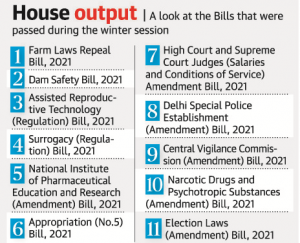
Sessions of Parliament
Summoning of the Parliament is specified in Article 85 of the constitution.
The power to convene a session of Parliament rests with the government. The decision is taken by the Cabinet Committee on Parliamentary Affairs. The decision of the Committee is formalized by the President, in whose name MPs are summoned to meet for a session.
There are usually three sessions in a year, viz,
Also, every year the session starts with the Presidential address.
Adjournment:
Adjournment sine die:
Adjournment sine die refers to the termination of a sitting of the House without any definite date being fixed for the next sitting.
Prorogation:
Dissolution:
THE CONTEXT: The Karnataka Protection of Right to Freedom of Religion Bill, 2021 introduced in the Karnataka Assembly aims to prohibit conversion by misrepresentation, force, fraud, the allurement of marriage, coercion and undue influence.
THE PROVISIONS OF THE BILL:
About conversion, the Bill claims that “allurement” includes any offer of any temptation in the form of:

How has Parliament handled anti-conversion bills?
THE CONTEXT: According to the Monthly Progress Report on Forest Rights Acts, published by the Ministry of Tribal Affairs (MoTA), Government of India, only 14.75% of the minimum potential forest areas for forest rights in India has been recognized since the Act came into force.
THE ANALYSIS OF THE FOREST RIGHTS ACT

IFR = Individual Forest Rights and CFR = Community Forest Rights
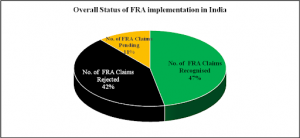
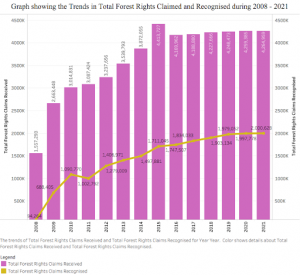
Enforcement challenges
MYTHS ABOUT FRA
Way forward
THE BACKGROUND:
About Forest Rights Act 2006:
Provisions of the 2006 Act
Features of the Act
The act identifies four types of rights:
Title rights
Use rights
Relief and development rights
Forest management rights
THE CONTEXT: The Cabinet Committee on Economic Affairs chaired by the Prime Minister has given its approval for the Minimum Support Prices (MSPs) for copra for the 2022 season.
THE EXPLANATION:
According to the statement released by the Government,

VALUE ADDITION:
What is the Minimum Support Price:

Commission for Agricultural Costs and Prices (CACP)
NAFED
THE CONTEXT: Digital payment firms and merchant bodies have petitioned the Reserve Bank of India to extend the deadline for implementation of the new credit and debit card data storage norms, or card-on-file tokenization (CoF). The RBI mandate on tokenization kicks in from January 1, 2022.
THE EXPLANATION:
WHAT IS TOKENISATION?
Challenges with the process
E-commerce platforms, online service providers and small merchants
Significance:

THE CONTEXT: Forest officials from Sirnapalli forest in Telangana spotted a rare Albino flap shell species, researchers later suggested they were traced only twice before in 2020 — once in Odisha and then in West Bengal,
THE EXPLANATION:
About Indian Flapshell turtle
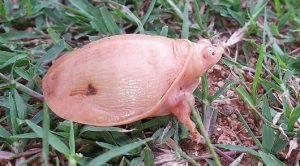
Threat: Exploitation on for-profit and habitat change are threats to their survival.
|
Add to your Knowledge: SC: Possession of ‘Indian Flap Shell Turtle’ not an offence under the Wildlife Protection Act SC said that the Turtle which has been seized is not that which is included in Part II of Schedule I. It stated that the Veterinary Surgeon has identified the Turtle as ‘Indian Flap Shell (Lissemy’s Punctata)’ whereas the Turtle which is included in Part II of Schedule I of the Act, 1972 is “Indian Soft-shelled Turtle (Lissemys punctata punctata).” |
THE PRELIM PRACTICE QUESTION
1. Consider the following statements:
Which of the given statements is/are correct?
a) 1 only
b) 2 only
c) Both 1 and 2
d) Neither 1 nor 2
FOR 22TH DECEMBER 2021 PRELIMS PRACTICE QUESTIONS
Answer: c)
Explanation:
Statement 1 is correct: In 2021, India was ranked 142nd out of 180 countries, placed in ‘bad category.
| [WpProQuiz 120] |
THE CONTEXT: Nagaland government has created three new districts in the state, taking the total number of districts to 15.
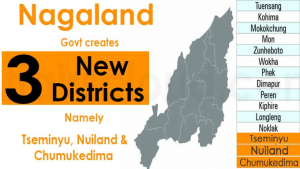
THE EXPLANATION:
How are new districts carved?
The power to create new districts or alter or abolish existing districts rests with the State governments. This can either be done through an executive order or by passing a law in the State Assembly. The many States prefer the executive route by simply issuing a notification in the official gazette.
How does it help?
States argue that smaller districts lead to better administration and governance. For example, in 2016, the Assam government issued a notification to upgrade the Majuli sub-division to Majuli district for “administrative expediency”.bdivision under Kohima district, Nagaland,” read a notification issued by the Nagaland government.
Does the Central government have a role to play here?
The Centre has no role to play in the alteration of districts or the creation of new ones. States are free to decide. The Home Ministry comes into the picture when a State wants to change the name of a district or a railway station. The State government’s request is sent to other departments and agencies such as the Ministry of Earth Sciences, Intelligence Bureau, Department of Posts, Geographical Survey of India Sciences and the Railway Ministry seeking clearance. A no-objection certificate may be issued after examining their replies.
What has been the trend?
According to the 2011 Census, there were 593 districts in the country. The Census results showed that between 2001-2011, as many as 46 districts were created by States. Though the 2021 Census is yet to happen, Know India, a website run by the Government of India, says currently there are 718 districts in the country. The surge in number is also due to the bifurcation of Andhra Pradesh into A.P and Telangana in 2014. Telangana at present has 33 districts and A.P has 13 districts.
THE CONTEXT: Underlining that the humanitarian crisis in Syria has not seen significant improvement in recent months, India has called for a nationwide comprehensive ceasefire, saying doing so will help to expand crossline humanitarian aid operations in the country.
THE EXPLANATION:

THE BACKGROUND
Syria is a west Asian Country bordering Lebanon, Turkey, Iraq, Jordan, and Israel. The civil war in Syria is regarded as the most brutal conflict in the world which started off in 2011.
The conflict between Shia Islam and Sunni Islam
The root of this conflict can be traced to sectarian conflicts in the region existing there for centuries. Shia Islam and Sunni Islam are the two major denominations of Islam Religion. With Saudi Arabia regarding itself as the leader of Sunni Muslims and Iran as the protector of Shia Muslims, the West Asian region is divided under these two leaders. Saudi and Iran started playing an important role in the geopolitical conflicts in the region.
What caused the uprising?
While lack of freedoms and economic woes drove resentment of the Syrian government, the harsh crackdown on protesters inflamed public anger.
Who are Kurds?
Why is Turkey invading Syria?
By invading northern Syria, Turkey seeks to create a peace zone, where it can deport Syrian refugees that fled the country during the Civil war in Syria.
However, experts believe in the name of the creation of a peace zone, Turkey wants to land grab the strategic area.
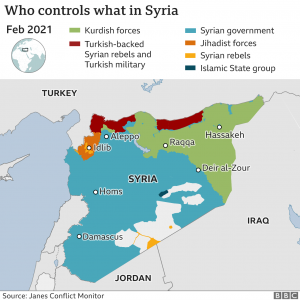
|
The Way ahead:
The outside powers that are involved in Syria’s civil war through proxy means need to reconsider their decision. Their role in converting a peaceful democratic movement into full-fledged war should be condemned. They should stop financing the extremist groups to avoid further conflicts in the region.
Considering the large-scale devastation which happened in Syria, rebuilding its human and social capital will be an insurmountable task for the govt. Therefore, the international community should come forward with a helping hand to bring the war-torn nation into normalcy. India can also play a constructive humanitarian role to establish peace and stability in the region.
THE CONTEXT: The Union Ministry of Agriculture and Farmers Welfare notified the draft order on ‘Prohibition of Streptomycin + Tetracycline in agriculture’, which prohibits import, manufacture or formulation of Streptomycin and Tetracycline for use in agriculture from February 1, 2022.
THE EXPLANATION:
Empirical data
What is antimicrobial resistance?

For example:
Colistin is the only last resort treatment for life-threatening infections caused by carbapenem-resistant Enterobacteriaceae (i.e. E.coli, Klebsiella, etc). Bacteria resistant to colistin have also been detected in several countries and regions, causing infections for which there is no effective antibiotic treatment at present.
KEY FACTS
|
THE CONTEXT: Forest officials from Sirnapalli forest in Telangana spotted a rare Albino flap shell species, researchers later suggested they were traced only twice before in 2020 — once in Odisha and then in West Bengal,
THE EXPLANATION:
About Indian Flapshell turtle
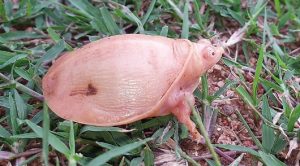
Threat: Exploitation on for-profit and habitat change are threats to their survival.
|
Add to your Knowledge: SC: Possession of ‘Indian Flap Shell Turtle’ not an offense under the Wildlife Protection Act SC said that the Turtle which has been seized is not that which is included in Part II of Schedule I. It stated that the Veterinary Surgeon has identified the Turtle as ‘Indian Flap Shell (Lissemy’s Punctata)’ whereas the Turtle which is included in Part II of Schedule I of the Act, 1972 is “Indian Soft-shelled Turtle (Lissemys punctate).” |
THE CONTEXT: Prime Minister launched the UDAN scheme nearly five years back with the aim to take flying to the masses. While over 400 routes have been launched by airlines, some of them have been discontinued.
THE EXPLANATION:
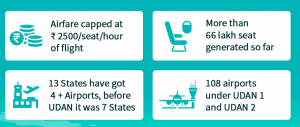
What is UDAN Scheme:
What is the status of the scheme?
What have been the challenges?
What lies ahead for the scheme?
The Government offers subsidies for a route for a period of three years and expects the airline to develop the route during this time so that it becomes self-sufficient.
THE PRELIM PRACTICE QUESTION
1. Consider the following statements about World Press Freedom Index:
Which of the statements given above is/are correct?
a) 1 only
b) 2 only
c) Both 1 and 2
d) Neither 1 nor 2
THE CONTEXT: The number of Assembly constituencies in Jammu will increase by six and in Kashmir by one, according to the draft paper of the Delimitation Commission. For the first time, the commission proposed reserving nine seats for Scheduled Tribes on the basis of population. Seven seats are proposed for the Scheduled Caste community. An additional 24 seats are proposed to be reserved for Pakistan-occupied Kashmir.
THE EXPLANATION:

What is Delimitation?
Aim: The key aim is to have equal representation to equal segments of the population in order to ensure a fair division of geographical areas so that all political parties or candidates contesting elections have a level playing field in terms of the number of voters.
Constitutional provisions:
Delimitation Commission
THE CONTEXT: Recently, PANEX-21was held in Pune for Humanitarian Assistance and Disaster Relief Exercise is to be held among the BIMSTEC countries: Bhutan, Bangladesh, Nepal, Myanmar, Sri Lanka, India and Thailand. The main aim of the exercise is to build regional cooperation in responding to natural disasters.
About PANEX-21:
How will the exercise be conducted?
Why is the exercise important?
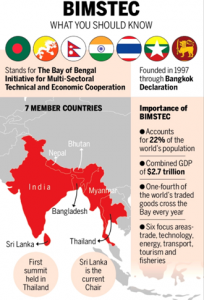
Why is BIMSTEC important for India?
As the region’s largest economy, India has a lot at stake.
THE CONTEXT: According to the new report, India recorded 867,000 deaths in 2017 due to exposure to fine particulate matter (PM2.5) — the second highest in the world.
THE EXPLANATION:
Major Pollutants:
Value Addition:
What is PM 2.5 and PM 10?
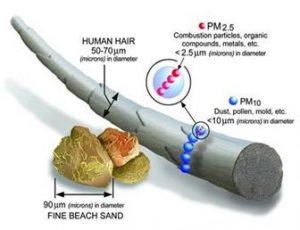
Sources of Particulate Matter
What are the health effects of PM2.5 and PM10?
Government Measurements:
THE CONTEXT: The study was undertaken as part of an assessment of the environmentally sensitive areas within the framework of the UN Convention to Combat Desertification (UNCCD). The scientists associated with the project studied the climate and vegetation in Thar, which is the world’s ninth-largest hot subtropical desert, to understand the desertification process.
THE EXPLANATION:
LOSS OF ARAVALI’S
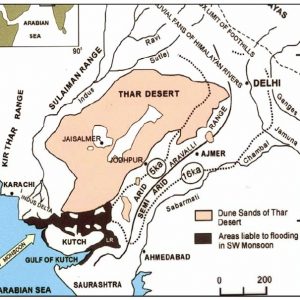
About the Thar Desert:
The Thar Desert is about 4.56% of the total geographic area of India. More than 60% of the desert lies in the Indian state of Rajasthan; the portion in India also extends into Gujarat, Punjab, and Haryana.
UN Convention to Combat Desertification (UNCCD):
COP14
OUTCOMES:
Delhi Declaration: Commitment for a range of issues, including gender and health, ecosystem restoration, taking action on climate change, private sector engagement, Peace Forest Initiative and recovery of five million hectares of degraded land in India.
The country parties have agreed to make the Sustainable Development Goal target of achieving land degradation neutrality by 2030, a national target for action.
Peace Forest Initiative: It is an initiative of South Korea to use ecological restoration as a peace-building process. It aims at addressing the issue of land degradation in conflict-torn border areas and would go a long way in alleviating tensions and building trust between communities living there and between enemy countries in particular.
The Bonn Challenge is a global effort to bring 150 million hectares of the world’s deforested and degraded land under restoration by 2020, and 350 million hectares by 2030.
THE CONTEXT: Heavy rains across Karnataka during October and November 2021 have affected the winter migration of birds that otherwise used to flock in large numbers and roost in the water bodies of the State before flying out again during the onset of summer.
THE EXPLANATION:
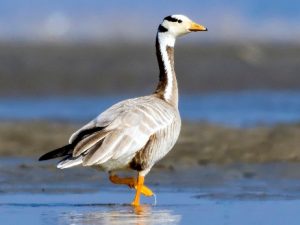
THE CONTEXT: An Indian desert cat has been spotted for the first time in Madhya Pradesh’s Panna Tiger Reserve (PTR).
THE EXPLANATION:
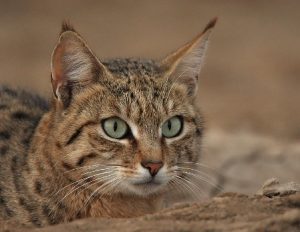
About Indian Desert Cat
Threats and Conservation:
About Panna Tiger Reserve
UNESCO on Panna Biosphere Reserve
THE PRELIM PRACTICE QUESTION
Q1. Consider the following statements about OIC:
Which of the above statements is/are correct?
a) 1 only
b) 2 and 3 only
c) 1 and 3 only
d) All of them
FOR 19TH DECEMBER 2021 PRELIMS PRACTICE QUESTIONS
Answer: A)
Explanation:
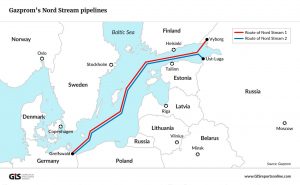
[WpProQuiz 119]
| [WpProQuiz 118] |
THE CONTEXT: The 3rd meeting of the India-Central Asia Dialogue was held under the chairmanship of the External Affairs Minister of India. Ministers of Foreign Affairs of the Republic of Kazakhstan, Kyrgyz Republic, Republic of Tajikistan, Turkmenistan, and the Republic of Uzbekistan took part in the meeting.
IMPORTANT OUTCOMES OF THE MEETING
During Pandemic:
INSTC Corridor:
INSTC CORRIDOR
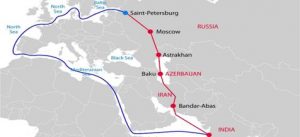
Defence and Security:
Afghan Crisis:
Climate Change:
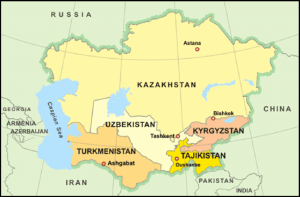
THE CONTEXT: According to researchers, with its size, population and aggravating air pollution, India needs 1,600 to 4,000 air quality monitors but has only 804 as of September 2021, most of which are concentrated in urban areas.
THE EXPLANATION:
Real-time monitoring
There are 261 real-time monitors whose data are updated on the central database. This network is technically part of the National Air Quality Monitoring Programme but its data are stored and treated separately because Central Pollution Control Board has not established a method of equivalence between the two monitoring techniques, the 2020 Centre for Science and Environment report pointed out.
Monitoring stations needed
Measuring pollutants
Value Addition:
National Air Quality Index (AQI)
Six AQI categories
|
AQI |
Associated Health Impacts |
|
Good |
Minimal Impact |
|
Satisfactory |
May cause minor breathing discomfort to sensitive people. |
|
Moderately polluted |
May cause breathing discomfort to people with lung disease such as asthma, and discomfort to people with heart disease, children and older adults. |
|
Poor |
May cause breathing discomfort to people on prolonged exposure, and discomfort to people with heart disease |
|
Very Poor |
May cause respiratory illness to the people on prolonged exposure. The effect may be more pronounced in people with lung and heart diseases. |
|
Severe |
May cause respiratory impact even on healthy people, and serious health impacts on people with lung/heart disease. The health impacts may be experienced even during light physical activity. |
Centre-run System of Air Quality and Weather Forecasting and Research (SAFAR)
Government Measurements:
THE CONTEXT: After successfully reintroducing the critically endangered Gharial (Gavialis Gangeticus) in the rivers of Punjab where it had become extinct half a century ago, the State’s wildlife preservation wing is now keeping its fingers crossed, expecting the breeding of the crocodilians to start in the new few years as the released gharials are healthy and have adapted to the Beas Conservation Reserve as their home.
THE EXPLANATION:
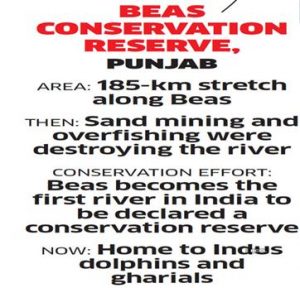
Value Addition:
Habitat and Distribution
THE CONTEXT: Defence Research and Development Organisation (DRDO) successfully tested the new generation nuclear capable ballistic missile ‘Agni P’ from Dr APJ Abdul Kalam island off the coast of Odisha.
THE EXPLANATION:
About Agni-V
Agni-V is an Indian nuclear-capable intercontinental ballistic missile (ICBM). It has been developed by the Defence Research and Development Organisation. Missile is having a range of around 5000 to 8000 km. It is a three-stage, solid-fuelled and road-mobile intercontinental ballistic missile. It is transported by a truck and launched using a canister.
Significance of Agni V
Agni V is used to enhance India’s nuclear deterrence against China. Earlier, the longest-range missile in India was Agni-III, which had the range of 3000–3500 km. This range was not sufficient to reach targets eastern and north-eastern region of China. Thus, DRDO was working on the upgraded version of this missile called Agni-V.
What is Ballistic Missile?
Types of ballistic missiles based on the range
What is the difference between ballistic and cruise missiles
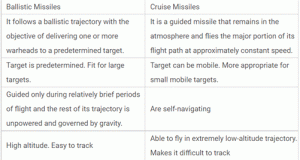
THE PRELIM PRACTICE QUESTION
Q1. ‘Nord Stream’ sometimes seen in the news is a natural gas pipeline between which of the following countries?
A) Russia and Germany
B) Germany and U.K.
C) K. and France
D) Germany and Sweden
FOR 18TH DECEMBER 2021 PRELIMS PRACTICE QUESTIONS
Answer: B
Explanation:
Statement 2 is correct: It consists of a chairperson and 6 Members.
[WpProQuiz 117]
THE CONTEXT: The third Annual Defence Dialogue between India and France took place between Defence Minister and his French counterpart in New Delhi. A wide range of bilateral, regional, defence and defence industrial cooperation issues were discussed in the annual meeting.
THE EXPLANATION:
France’s resolve to expand strategic cooperation with India came nearly two months after the unveiling of a new security alliance (AUKUS) by Australia, the UK and the US that had infuriated the French government.
Defence & Space Cooperation between the two countries
THE CONTEXT: The India Meteorological Department (IMD) has predicted a cold wave in parts of Punjab, Haryana, Chandigarh, Gujarat, Rajasthan, and Uttar Pradesh from mid-December 2021.
THE EXPLANATION:
What is a cold wave?
The IMD defines a cold wave qualitatively as “a condition of air temperature which becomes fatal to the human body when exposed.”
Why do cold waves occur?
How is it measured?
THE CONTEXT: Recently, Arctic Report Card was published by the Arctic Program of the National Oceanic and Atmospheric Administration where it stated that “the COVID-19 pandemic has exacerbated existing challenges for Alaska natives in accessing traditional foods”.
THE EXPLANATION:


Value Addition:
What is the Arctic Council?
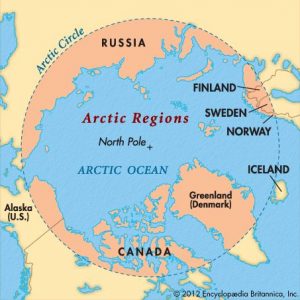
India and Arctic
THE CONTEXT: The launch of the US-India Climate and Clean Energy Agenda 2030 partnership in April 2021 reiterated the commitment of both nations to work together to achieve their ambitious climate and clean energy targets and to strengthen bilateral collaborations.
THE EXPLANATION:
What is the need?
ADD TO YOUR KNOWLEDGE
The US’s special envoy for climate action, visited India in April 2021 to discuss climate finance and action under the bilateral Climate and Clean Energy Agenda 2030Partnership. The partnership, launched in April 2021, aims to provide financial and technological support to India to meet its Paris Agreement goals on transitioning to renewable energy by 2030
Partnership to Advance Clean Energy (PACE)
Q1. Consider the following statements:
Which of the statements given above is/are correct?
a) 1 only
b) 2 only
c) Both 1 and 2
d) Neither 1 nor 2
FOR 17TH DECEMBER 2021 PRELIMS PRACTICE QUESTIONS
Answer: c)
Explanation:
Answer: b)
Explanation:
Blue box subsidies:
THE CONTEXT:According to the Ministry of Culture, the Chalcolithic cultures of Central India are adequately investigated and studied. Much of their aspects are sufficiently researched and analyzed.
THE EXPLANATION:
During field season 2021-22, ASI has received proposals for excavations at the sites of Chalcolithic affiliations at Eran, district Sagar and at Tewar, district Jabalpur of Madhya Pradesh.
Status of Archaeological Investigations in Central India
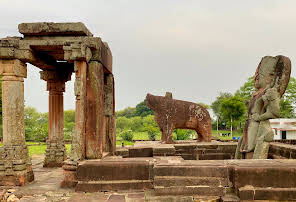
Excavation at Eran during 2020-21: Eran (ancient Airikina) is situated on the left bank of the Bina (ancient Venva) river and surrounded by it on three sides. Eran is located 75 km north-west from Sagar district headquarter.
Excavation at Tewar during 2020-21:Tewar (Tripuri) village is located 12 km west of Jabalpur district on Jabalpur – Bhopal highway. The ancient site of Tripuri is situated nearly 2 km south west from Tewar village. During 2020-21 ASI conducted excavation of Tewar at two locations, TWR 1 and TWR 2.
VALUE ADDITION:
The term Chalcolithic is a combination of two words- Chalco+Lithic is an archaeological period that is usually considered to be part of the broader Neolithic (although it was originally defined as a transition between the Neolithic and the Bronze Age).
Important Sites Chalcolithic Culture
| Chalcolithic Culture |
Sites of Chalcolithic Culture |
| 1. Ahara Culture | Aahar (Rajasthan), balathal, Gilund etc. The distinctive feature is black and red ware. |
| 2. Kayatha Culture | Located in Chambal and its tributaries, the sturdy red slipped ware with chocolate designs is main feature. |
| 3. Malwa Culture | Narmada & its tributaries in Gujarat. One of the largest Chalcolithic settlements. |
| 4. Svalda Culture | Dhulia district of Maharashtra. |
| 5. Prabhas & Rangpur Culture | Both of them are derived from the Harappa culture. The polished red ware is the hall mark of this culture. |
Characteristics of Chalcolithic Age
(a) People of Chalcolithic Age survived on hunting, fishing, and farming
(b) Hunting was one of the important occupations
(c) Animals such as sheep, buffalo, goat, cattle, and pig were reared and killed for food
(d) Remains of camels are also found. People ate beef but no traces of eating pork are found
(e) People of Navdatoli grew ber and linseed
(f) Cotton was produced in black cotton soil
(g) Traces of rice cultivation are also found. This shows that their food included fish and rice. Eastern India produced rice and Western India produced barley
(h) The major crops cultivated were barley and wheat, lentil, bajra, jowar, ragi millets, green pea, green and black gram
(a) Metals such as copper and its alloys were used to make knives, axes, fishing hooks, chisels, pins, and rods
(a) Use of bricks was extensive during the Chalcolithic people of Harappa but there are no traces of burnt (baked) bricks.
(b) The planning of the houses was simple which was either rectangular or circular.
(c) The walls of houses were made from mud and plastered with cow dung and lime.
(d) The houses mostly had only one room, but sometimes multi-roomed houses were also seen.
(e) For influential people, large mud houses with 5 rooms, 4 rectangular and 1 circular in centre of the settlement are found.
(f) In inamgaon, ovens and circular pit houses are found.
THE CONTEXT: The country commemorated 50 years of the decisive victory in the 1971 Liberation War of Bangladesh, which also changed the geography of South Asia.
THE EXPLANATION:
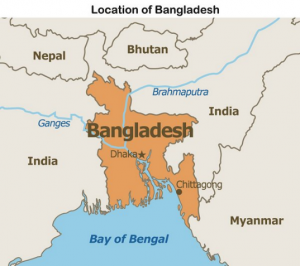

What were the causes of 1971 war?
THE CONTEXT: Natural disasters such as cyclones and floods have increased in the country and the Arsenic in groundwater beyond the permissible limit has been encountered in three districts in Punjab.
THE EXPLANATION:
Frequency of natural disasters
Heavy metals in groundwater
According to the data available with Central Ground Water Board, As of December 13, 2021, 36,873 rural habitations were reported to have quality issues in drinking water sources.
Arsenic in groundwater beyond the permissible limit has been encountered in three districts in Punjab, particularly in Malwa belt Mansa, Faridkot and Sangrur;
Old dams
India has 1,175 large dams (including one dam of Punjab, Nangal dam) more than 50 years old (constructed in or before 1971), according to the National Register of Large Dams (2019) maintained by the Central Water Commission.
The country has 227 large dams having more than 100 years of service life (constructed in or before 1921).
Cost economics of renewable energy sources
Encroachment of water bodies
According to the Ministry of Jal Shakthi, the works related to the enumeration of water bodies, their protection from encroachment or diversion for use for other purposes, comes under the purview of the state government concerned. However, from time to time, the Union Ministry of Jal Shakti conducts census of minor irrigation schemes in the country, which captures data regarding water bodies in rural areas associated with irrigation.
There are 516,303 water bodies in the rural areas of the country being used for minor irrigation purposes, out of which 53,396 are not in use for various reasons such as non-availability of water, siltation, salinity, etc.
THE CONTEXT: The Union Cabinet took the decision to raise the legal age of marriage for women from 18 to 21 years. The legal age of marriage for men is 21 years. With this decision, the government will be bringing the age of marriage for both men and women at par.
THE EXPLANATION:
Why is there a minimum age of marriage?
Why has the government decided to re-examine the age of marriage?
What is the Jaya Jaitly committee?
What did the committee recommend?
THE CONTEXT: According to the report, there are currently 488 media professionals imprisoned around the world,the highest number since Reporters Without Borders began counting more than 25 years ago.
THE EXPLANATION:
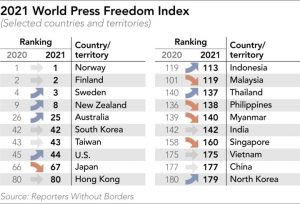
WORLD PRESS REPORT 2021
India is ranked 142, same as in 2020, after it had consistently slid down from 133 in 2016. In the South Asian neighbourhood, Nepal is at 106, Sri Lanka at 127, Myanmar (before the coup) at 140, Pakistan at 145 and Bangladesh at 152.
About World Press Freedom Index:
THE CONTEXT: Researchers from Mishmi hills of Arunachal Pradesh sighted a rare species of Butterfly, which is first documented in 20 years ago.
THE EXPLANATION:

Since the Huang’s Mystic Lethe wui Huang has not been reported in India until now, it is not safeguarded by the country’s Wildlife (Protection) Act unlike several other species of butterflies.
Butterfly festivals
THE PRELIM PRACTICE QUESTION
Q1. Minimum Support Prices (MSP) for agricultural products comes under which of the following box of WTO?
a) Blue box
b) Green box
c) Amber box
d) S & D box
Q2. In the context of the WTO, the subsidies tied to programmes that limit production are known as-
a) Amber box subsidies
b) Blue box subsidies
c) Green box subsidies
d) S & D box subsidies
FOR 16TH DECEMBER 2021 PRELIMS PRACTICE QUESTIONS
Answer: D)
Explanation:
[WpProQuiz 116]
THE CONTEXT: Durga Puja in Kolkata, one of largest cultural carnivals and street art festival of the country, received an important international recognition by making it to UNESCO’s Representative List of the Intangible Cultural Heritage of Humanity.
THE EXPLANATION:
UNESCO’s ‘Intangible Cultural Heritage of Humanity’ list
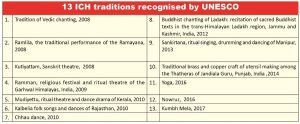
2. DEMAND FOR INCLUSION OF LADAKH IN THE SIXTH SCHEDULE
THE CONTEXT: Recently, a Member of Parliament from Ladakh demanded that the region be included in the Sixth Schedule of the Constitution to safeguard land, employment, and cultural identity of the local population.
THE EXPLANATION:
What is the Sixth Schedule?
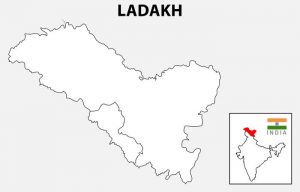 with more than 40 members and the right to make laws on 39 issues.
with more than 40 members and the right to make laws on 39 issues.The Sixth Schedule applies to the Northeastern states of Assam, Meghalaya, Mizoram (three Councils each), and Tripura (one Council).
Why does Ladakh want to be part of the Sixth Schedule?
There was much enthusiasm initially, mostly in Leh, after the August 5, 2019 decisions that created two new Union Territories. Buddhist-dominated Leh district had long demanded UT status because it felt neglected by the erstwhile state government, which was dominated by politicians from Kashmir and Jammu.
The UT has two Hill councils in Leh and Kargil, but neither is under the Sixth Schedule. Their powers are limited to collection of some local taxes such as parking fees and allotment and use of land vested by the Centre.
Voices from the ground:
In Kargil district, which is dominated by Shia Muslims, demands have been raised for the restoration of special status — also for a merger with the UT of J&K which has been provisioned a legislature. Representatives of social, religious, and political groups in Kargil have come together under the banner of the KDA.
Can Ladakh be included in Sixth Schedule?
In September 2019, the National Commission for Scheduled Tribes recommended the inclusion of Ladakh under the Sixth Schedule, noting that the new UT was predominantly tribal (more than 97%), people from other parts of the country had been restricted from purchasing or acquiring land there, and its distinct cultural heritage needed preservation.
Notably, no region outside the Northeast has been included in the Sixth Schedule. In fact, even in Manipur, which has predominantly tribal populations in some places, the autonomous councils are not included in the Sixth Schedule.Nagaland and Arunachal Pradesh, which are totally tribal, are also not in the Sixth Schedule.
According to Home Ministry. “The Ladakh’s inclusion in the Sixth Schedule would be difficult. The Constitution is very clear, Sixth Schedule is for the Northeast. For tribal areas in the rest of the country, there is the Fifth Schedule”.
However, it remains the prerogative of the government — it can, if it so decides, bring a Bill to amend the Constitution for this purpose.
THE CONTEXT: According to a report by the State Centre on Climate Change Shimla and Space Application Centre of the ISRO in Ahmedabad said, that the Himachal Pradesh, a state that has five important perennial rivers fed particularly by glaciers, has witnessed a decline in snowfall over the past year. The area under snow cover in the state has declined by 18.5% between 2019-’20 and 2020-’21.
THE EXPLANATION:
Falling snow cover
The report added that the snow cover in the Chenab basin fell from 7,154 sq km in 2019-’20 to 6,516 sq km in 2020-’21, a reduction of 638 sq km or 8.92%. The Beas basin shows a decrease of about 19% with its average snow cover area having decreased from 2,458 sq km to 2,002 sq km, a loss of 455 sq km. The Ravi basin saw an overall reduction of 23% in the total area under snow cover.
The snow cover in the Sutlej Basin, which covers 45% area of Himachal and is the longest river in the state, shrunk the most by 23.49% or 2,777 sq km. It was 11,823 sq km in 2019-’20 and 9,046 sq km this year.
Another study published in 2019 said that the Sutlej River basin glaciers are melting fast and may shrink significantly by as soon as 2050. The research estimates that the melting would cause 33% of the glaciers to disappear by 2050 and 81% by the end of the century.

Melting glaciers
Not only Himachal, glaciers in Jammu, Kashmir and Ladakh are also melting at a significant rate. According to a 2020 study, over 1,200 glaciers in the region saw an annual reduction in mass of 35 centimetres on average between 2000 and 2012. The study added that the glaciers have reduced from 102 sq km in 1980 to 72 sq km in 2018 showing a recession 28.8% decrease.
The Ganges River system in the Indian Himalayas can be divided into four major river basins i.e the Yamuna, Bhagirathi, Alaknanda and Ghaghara River Basins. The Ganges River system remains the main source of fresh water for half the population of India and Bangladesh and nearly the entire population of Nepal. Reports also mention a decline in snow cover of the Brahmaputra basin.
According to a study Glacio-hydrology of the Himalaya-Karakoram by Ministry of Science and Technology, snow and glaciers are melting rapidly in the Himalayan range due to climate change, altering water supplies in the rivers like Indus, Ganga and Brahmaputra in the Himalaya-Karakoram ranges. Total river runoff, glacier melt and seasonality of flow in these rivers are projected to increase until the 2050s, with some exceptions and large uncertainties.
Panchprayag:
The five holy places of PanchPrayag include:
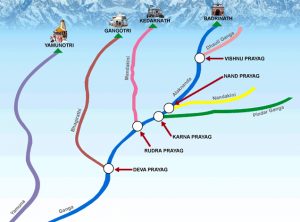
THE CONTEXT:The Prime Minister highlighted the importance of Zero Budget Natural Farming and, he called for the method to become a mass movement.
THE EXPLANATION:
What is Zero Budget Natural Farming?
ZBNF is a method of chemical-free agriculturedrawing from traditional Indian practices. It was originally promoted by agriculturist and Padma Shri recipient Subhash Palekar, who developed it in the mid-1990s as an alternative to the Green Revolution’s methods driven by chemical fertilizers, pesticides and intensive irrigation.
What is it and how did it come about?
According to Subhash Palekar, he argued that the rising cost of these external inputs was a leading cause of indebtedness and suicide among farmers, while the impact of chemicals on the environment and on long-term fertility was devastating. Without the need to spend money on these inputs — or take loans to buy them — the cost of production could be reduced, and farming made into a “zero budget” exercise, breaking the debt cycle for many small farmers.
What is the method?
A similar mixture, called bijamrita, is used to treat seeds, while concoctions using neem leaves and pulp, tobacco and green chillis are prepared for insect and pest management.
The ZBNF method also promotes soil aeration, minimal watering, intercropping, bunds and topsoil mulching and discourages intensive irrigation and deep ploughing. Mr. Palekar is against vermicomposting, which is the mainstay of typical organic farming, as it introduces the most common composting worm, the European red wiggler (Eisenia fetida) to Indian soils. He claims these worms absorb toxic metals and poison groundwater and soil.

Is it effective?
A limited 2017 study in Andhra Pradesh claimed a sharp decline in input costs and improvement in yields. However, reports also suggest that many farmers, including from Mr. Palekar’s native Maharashtra, have reverted to conventional farming after seeing their ZBNF returns drop after a few years, in turn raising doubts about the method’s efficacy in increasing farmers’ incomes.
ZBNF critics, including some experts within the central policy and planning think tank NITI Aayog, note that India needed the Green Revolution in order to become self-sufficient and ensure food security. They warn against a wholesale move away from that model without sufficient proof that yields will not be affected. Sikkim,(First organic state in India) which has seen some decline in yields following a conversion to organic farming, is used as a cautionary tale regarding the pitfalls of abandoning chemical fertilizers.
|
The burden of fertiliser subsidy Fertiliser subsidy in the country amounting to close to INR 79,960 crore in 2019-20 constitutes a sizeable portion of the government’s agricultural subsidies. The urea subsidy alone corners more than 60 percent of the allocation, the rest being nutrient-based subsidies. The total outlay on fertiliser subsidies in 2017–18 in Andhra Pradesh alone is INR 3,485 crore. |
Which are the States with big plans?
The Centre has sanctioned the proposals of eight States for support under the Paramparagat Krishi Vikas Yojana scheme. Andhra Pradesh has the biggest ambition to bring one lakh additional hectares of land under ZBNF under the scheme, followed by Chhattisgarh, with 85,000 additional hectares and Gujarat, with 71,000 additional hectares.
Need of the hour:
While harnessing the advantages of the prescribed natural inputs, it is also important to explore the feasibility of alternatives in case of inaccessibility to critical inputs. Considering the Government’s interest in promoting ZBNF at the national level, the extent of its sustainability needs to be critically monitored in the next few years. An extensive study with a larger sample size and a few demonstration units in small pockets of monitored agricultural land is recommended.
As the prescribed guidelines for ZBNF are similar for all crops and agro-climatic conditions, the single-solution applicability of natural ingredients needs to be tested for all crops and soil types. Close monitoring of the soil health during and after transition would allow us to understand the long-term impact of the practice.
THE INDIAN ECONOMY
THE CONTEXT: The Reserve Bank of India (RBI) introduced a prompt corrective action (PCA) framework for large non-banking financial companies (NBFCs), putting restrictions on para-banks whenever vital financial metrics dip below the prescribed threshold.
THE EXPLANATION:

What is Prompt Corrective Action (PCA)?
THE CONTEXT: A World Trade Organization panel ruled that India violated international trade rules when it offered excessive subsidies for the production and export of sugar and sugarcane.
THE EXPLANATION:
The dispute dates back to 2019 when Brazil, Australia and Guatemala filed parallel WTO complaints that alleged the Indian government massively increased its sugar subsidies and reintroduced a minimum price for sugar, which led to increased production of sugar that outstripped domestic demand.
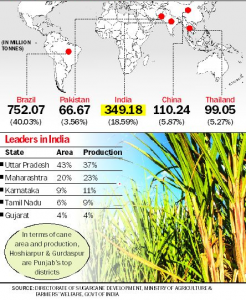
According to Brazil’s complaint, during the 2018-2019 growing season, India approved dozens of federal and state-level assistance programs for the sugar industry that collectively exceeded 55 billion rupees ($730 million).
India’s response:
WTO Agreement on Agriculture:
AoA is aimed to remove trade barriers and to promote transparent market access and integration of global markets. Agreement on agriculture has three components:
Under this provision, the Aggregate Measurement of Support (AMS) is to be reduced by 20% over a period of 6 years by developed countries and 13% over a period of 10 years by developing countries.
Under this, Subsidies are categorized into three parts:
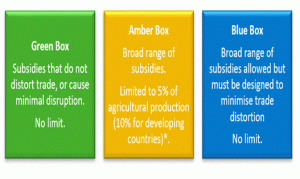
THE CONTEXT: In an attempt to push Semiconductor manufacturing within the country, the Union Cabinet,cleared a Rs 76,000 crore production-linked incentive scheme (PLI) for semiconductor and display manufacturers to make the country an electronic system design and manufacturing global hub.
THE EXPLANATION:

What is the need?
Semiconductors and displays are the foundation of modern electronics driving the next phase of digital transformation under Industry 4.0. Semiconductors and display manufacturing is very complex and technology-intensive sector involving huge capital investments, high risk, long gestation and payback periods, and rapid changes in technology, which require significant and sustained investments.
Following broad incentives have been approved for the development of semiconductors and display manufacturing ecosystem in India:

Semi-conductor Laboratory (SCL): Union Cabinet has also approved that Ministry of Electronics and Information Technology will take requisite steps for modernization and commercialization of Semi-conductor Laboratory (SCL).MeitY will explore the possibility for the Joint Venture of SCL with a commercial fab partner to modernize the brownfield fab facility.
Compound Semiconductors / Silicon Photonics / Sensors (including MEMS) Fabs and Semiconductor ATMP / OSAT Units: The Scheme for Setting up of Compound Semiconductors / Silicon Photonics / Sensors (including MEMS) Fabs and Semiconductor ATMP / OSAT facilities in India shall extend fiscal support of 30% of capital expenditure to approved units. At least 15 such units of Compound Semiconductors and Semiconductor Packaging are expected to be established with Government support under this scheme.
Semiconductor Design Companies: The Design Linked Incentive (DLI) Scheme shall extend product design linked incentive of up to 50% of eligible expenditure and product deployment linked incentive of 6% – 4% on net sales for five years.
India Semiconductor Mission: In order to drive the long-term strategies for developing a sustainable semiconductors and display ecosystem, a specialized and independent “India Semiconductor Mission (ISM)” will be set up. The India Semiconductor Mission will be led by global experts in semiconductor and display industry. It will act as the nodal agency for efficient and smooth implementation of the schemes on Semiconductors and Display ecosystem.
Significance:
BACKGROUND:
What is a Semiconductor?

THE PRELIM PRACTICE QUESTION
1.Consider the following are in the UNESCO intangible heritage sites:
Which of the statements given above are incorrect?
a) 1 and 2 only
b) 2 and 3 only
c) 1 and 3 only
d) None
ANSWER FOR 13TH DECEMBER 2021 PRELIMS PRACTICE QUESTIONS
Answer: c)
Explanation:
| [WpProQuiz 115] |
| [WpProQuiz 112] |